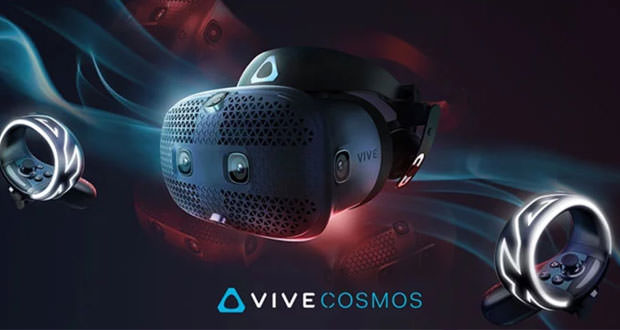HTC Vive Cosmos: Almost twice as many pixels as the original Vive
HTC has revealed more details about its future Vive Cosmos Virtual Reality viewer, of which the most interesting is the resolution data.
Vive Cosmos is one of the two new viewers that HTC revealed earlier this year at CES in Las Vegas (the other Vive Pro Eye for businesses is already available for purchase). Vive Cosmos is a device aimed at the consumer market that requires the Desktop PC for image processing, while later on its mobile variant should also arrive.
” Cosmos will be more easily accessible for users who have already invested in VR and will be a superior experience for VR enthusiasts, ” says HTC. Which now reveals that the resolution of the new viewer will be 1,440×1,700 pixels per eye, for a total resolution of 2,880×1,700 pixels.
Which is to say that the display of HTC Vive Cosmos will display almost twice as many pixels as the display on the previous generation HTC Vive. For the original Vive, it was 1080×1200 pixels per eye, or 2,160×1,200 total pixels, or 88% fewer pixels.
This is tantamount to saying that HTC Vive Cosmos will be the most detailed viewer regarding the Vive brand, superior even to HTC Vive Pro, which provides a resolution of 1,440×1,600 pixels per eye or 2,880×1,600 pixels in total.
HTC will also use RGB panels where each pixel is the result of the stimulation of the three fundamental sub-pixels, which should guarantee a lower incidence of the ” screen door ” effect. The original HTC Vive, used a display with a Pentile type matrix not particularly suitable in order to minimize the presence of black ” spaces ” between one pixel and another.
The Pentile scheme uses only 2 sub-pixels for the formation of a pixel, unlike the 3 in the classic RGB scheme (red, green, blue), which helps to increase the ” screen door ” effect.
Vive Cosmos will use an inverse perspective tracking system (inside-out tracking) using the 6 video cameras installed on the viewer, ensures tracking on the entire room without the need to have to set up infrared turrets.
Furthermore, the front part of the visor is modular and can be modified later when purchased. It is not yet clear why the user should want to replace the faceplate, beyond the clear reasons of product preservation and longevity in the long run.
HTC has not yet provided information about the availability date of the Vive Cosmos and its price. Its main rivals are Valve Index (1,440 × 1,600 pixels per eye, 2,880 × 1,600 total) and Oculus Rift S (1,280×1,440 pixels per eye, 2,560×1,440 total). Vive Cosmos will work at 90 Hz.


